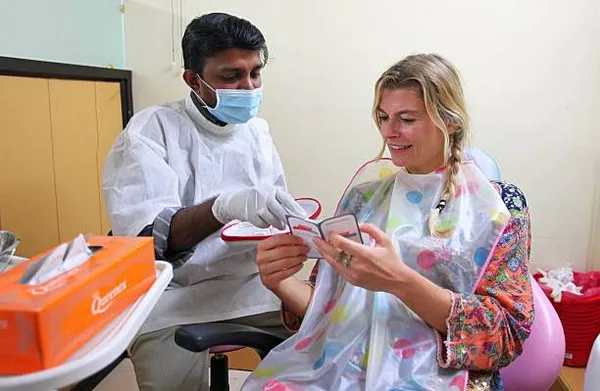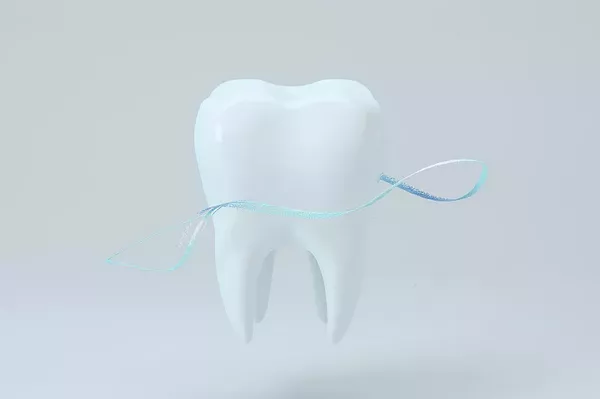Understanding why your teeth appear yellow in the morning involves a closer look at the structure of your teeth, your daily habits, and natural physiological processes. This article aims to explore these factors in-depth, providing a comprehensive understanding of tooth color and offering practical solutions for maintaining a bright smile.
Understanding Tooth Color
To comprehend why teeth might appear yellow, it’s essential to understand the anatomy of a tooth. Each tooth is composed of multiple layers, primarily the enamel and the dentin, which play crucial roles in determining its color.
Enamel: The Outer Layer
Enamel is the hard, translucent outer layer of the tooth. It is the strongest substance in the human body, yet it is also porous. This porosity means that enamel can absorb colors from foods and beverages over time, leading to discoloration. Despite its hardness, enamel can wear down, becoming thinner and more translucent, which allows the color of the underlying dentin to show through more prominently.
Dentin: The Inner Layer
Beneath the enamel lies the dentin, a softer, yellowish layer that is more susceptible to discoloration. Dentin contains microscopic tubules that can absorb pigments from staining substances. When enamel erodes or becomes thin, the yellowish hue of dentin becomes more visible, contributing to an overall yellowish appearance of the teeth.
The interplay between these two layers determines the natural color of your teeth. Healthy teeth naturally range from white to slightly yellow, depending on the thickness and color of the enamel and dentin.
Dehydration and Saliva Production
A common reason for teeth appearing yellow in the morning is overnight dehydration and reduced saliva production. Saliva plays a vital role in maintaining oral health and aesthetics by washing away food particles and neutralizing acids produced by bacteria in the mouth.
The Role of Saliva in Tooth Color
Saliva helps to keep the mouth moist and facilitates the natural cleaning of teeth. It also contains enzymes that break down food particles and bacterial acids, which can otherwise contribute to staining and decay. When saliva production decreases, such as during sleep, these cleaning processes are less effective.
Overnight Dehydration
During the night, saliva production decreases significantly, leading to a drier mouth. This dryness can cause the teeth to appear more yellow for a couple of reasons:
Less Light Reflection: A dry mouth reduces the natural shine and reflective quality of teeth, making them look duller and more yellow.
Bacterial Build-up: Reduced saliva means more bacterial activity, leading to plaque formation, which can cause teeth to look discolored.
Upon waking and rehydrating, saliva production increases, helping to wash away some of the bacteria and food particles that accumulated overnight. This often leads to an improvement in tooth color as the day progresses.
see also: When Can I Eat After Deep Cleaning
Dietary Influences
What you eat and drink significantly impacts the color of your teeth. Several common dietary choices are known to contribute to yellowing and staining.
Staining Beverages
Certain beverages are notorious for their staining properties:
Coffee and Tea: Both contain tannins, which can lead to staining. Coffee is acidic, which can also erode enamel, making it easier for stains to take hold.
Red Wine: Like tea and coffee, red wine contains tannins and chromogens, which are pigments that can stick to enamel.
Staining Foods
Several foods are known to cause staining:
Berries: Blueberries, blackberries, and other dark berries are rich in pigments that can stain teeth.
Tomato Sauce: The high acidity and vibrant color can lead to staining over time.
Curry and Turmeric: These spices are deeply pigmented and can contribute to discoloration.
Acidic Foods and Beverages
Acidic foods and drinks, such as citrus fruits and soda, can erode enamel. This erosion makes the teeth more susceptible to staining and the yellowish dentin underneath more visible.
Sugary Foods
Sugar feeds bacteria in the mouth, leading to increased acid production and potential enamel erosion, further contributing to a yellowish appearance.
Oral Hygiene Practices
Maintaining proper oral hygiene is crucial in preventing and managing tooth discoloration.
Brushing and Flossing
Regular brushing and flossing remove food particles and plaque, which can cause staining and decay. Here are some tips for effective oral hygiene:
Brush Twice Daily: Use a soft-bristled toothbrush and fluoride toothpaste to brush for at least two minutes, ensuring all surfaces of the teeth are cleaned.
Floss Daily: Flossing removes food particles and plaque from between teeth, where a toothbrush can’t reach.
Using Mouthwash
An antibacterial mouthwash can help reduce the bacterial load in the mouth, decreasing the risk of plaque formation and staining. Choose a mouthwash that contains fluoride for added protection against decay.
Regular Dental Check-Ups
Regular visits to the dentist for professional cleaning can help remove surface stains and tartar, which are difficult to eliminate with regular brushing and flossing alone. Dentists can also offer personalized advice on maintaining tooth color and overall oral health.
Professional Advice
Consulting with a dentist is essential for personalized advice and professional cleaning options. Dentists can provide treatments that are more effective than over-the-counter solutions.
Professional Cleanings
Routine professional cleanings help to remove tartar and surface stains. Dentists use specialized tools to clean areas that are difficult to reach with a toothbrush and floss.
Dental Treatments
For more significant discoloration, dentists can offer treatments such as:
Whitening Treatments: Professional whitening treatments are more potent and effective than at-home kits. They can significantly brighten teeth but should be done under the supervision of a dentist to avoid damage to the enamel and gums.
Bonding and Veneers: For severe discoloration, dentists might recommend bonding or veneers. These are cosmetic procedures that cover the front surface of the teeth to improve their appearance.
see also: How Much Is Teeth Cleaning And Whitening
Preventive Measures
Preventing tooth discoloration involves making conscious choices about your diet and lifestyle, as well as maintaining excellent oral hygiene practices.
Reduce Intake of Staining Foods and Drinks
Limiting consumption of coffee, tea, red wine, and other staining substances can help maintain whiter teeth. Using a straw when drinking these beverages can reduce contact with teeth, minimizing staining.
Stay Hydrated
Drinking plenty of water throughout the day helps maintain saliva production and wash away food particles and bacteria. This is especially important after consuming staining foods and drinks.
Quit Smoking
Tobacco products are one of the leading causes of tooth discoloration. Quitting smoking not only benefits your oral health but also your overall health.
Rinse After Eating
Rinsing your mouth with water after meals can help remove food particles and reduce the potential for staining. Chewing sugar-free gum can also stimulate saliva production, aiding in natural cleaning.
Cosmetic Solutions
For those seeking to improve the appearance of their teeth beyond regular hygiene and preventive measures, there are several cosmetic solutions available.
Whitening Treatments
There are various whitening treatments available, ranging from over-the-counter products to professional services. It’s essential to have realistic expectations about these treatments:
Over-the-Counter Products: These include whitening toothpaste, strips, and gels. They can help with minor stains but may not be as effective as professional treatments.
Professional Whitening: Conducted by a dentist, these treatments use stronger bleaching agents and can significantly whiten teeth. However, they should be done under professional supervision to avoid damaging the enamel.
Natural Tooth Color
It’s important to have realistic expectations about tooth color. Not all teeth can achieve a bright white shade, and that’s perfectly natural. Healthy teeth can have a range of colors from white to light yellow.
Veneers and Bonding
For those with severe discoloration or structural issues, cosmetic dentistry offers options such as veneers and bonding. These procedures can cover the front surface of the teeth to enhance their appearance. Veneers are thin porcelain shells that are custom-made and bonded to the teeth, providing a durable and natural-looking solution.
Conclusion
Understanding why teeth might appear yellow in the morning involves examining various factors, including tooth anatomy, hydration levels, dietary choices, and oral hygiene practices. By maintaining good oral hygiene, making mindful dietary choices, staying hydrated, and seeking professional advice, you can help keep your teeth looking their best. Remember, the natural color of teeth can vary, and achieving a healthy smile is more important than striving for perfect whiteness. For those seeking cosmetic enhancements, professional treatments and advice are available to help you achieve the desired results while maintaining oral health.
FAQs about Yellow Teeth
1. How do you get rid of yellow teeth in the morning?
There are several ways to address yellow teeth when you wake up:
Brush and Floss: Start by brushing your teeth with a fluoride toothpaste for at least two minutes. Make sure to floss to remove plaque and food particles between your teeth.
Whitening Toothpaste: Use a toothpaste that contains mild abrasives and whitening agents.
Mouthwash: Rinse your mouth with an antibacterial or whitening mouthwash.
Baking Soda: Occasionally, you can brush with a mixture of baking soda and water to help remove surface stains.
Hydration: Drink plenty of water, especially if you have dry mouth in the morning, which can contribute to yellowing.
2.Why do my teeth go yellow overnight?
Teeth can appear more yellow in the morning due to several factors:
Dry Mouth: Saliva production decreases at night, and saliva helps to wash away food particles and bacteria.
Plaque Build-up: Without the natural cleansing action of saliva, plaque can build up on your teeth overnight.
Diet and Lifestyle: Consuming stain-causing foods and drinks like coffee, tea, or wine before bed without proper oral hygiene can lead to discoloration.
Smoking: Tobacco products stain teeth and can cause overnight yellowing.
3. Can yellow teeth be white again?
Yes, yellow teeth can often be whitened back to a more natural shade. Here are some common methods:
Professional Whitening: Dentists offer professional bleaching treatments that can significantly lighten teeth.
Over-the-Counter Products: Whitening strips, gels, and kits available at drugstores can also be effective.
Whitening Toothpaste: Regular use of toothpaste designed for whitening can help maintain a brighter smile.
Home Remedies: Some people use baking soda or activated charcoal to help whiten teeth, though results can vary.
4. Are yellow teeth healthier?
The color of your teeth does not necessarily reflect their health. Key points to consider include:
Enamel Thickness: Thicker enamel can appear more yellow, but this doesn’t mean it’s unhealthy.
Dentin Exposure: Underneath the enamel, dentin is naturally yellow, and more visible dentin can make teeth look yellower.
Hygiene and Health: Yellow teeth can be perfectly healthy if you maintain good oral hygiene and have regular dental check-ups.
Diet and Habits: A diet rich in fruits and vegetables, proper hydration, and avoiding smoking can help keep your teeth healthy, regardless of their color.
You Might Be Interested In





























